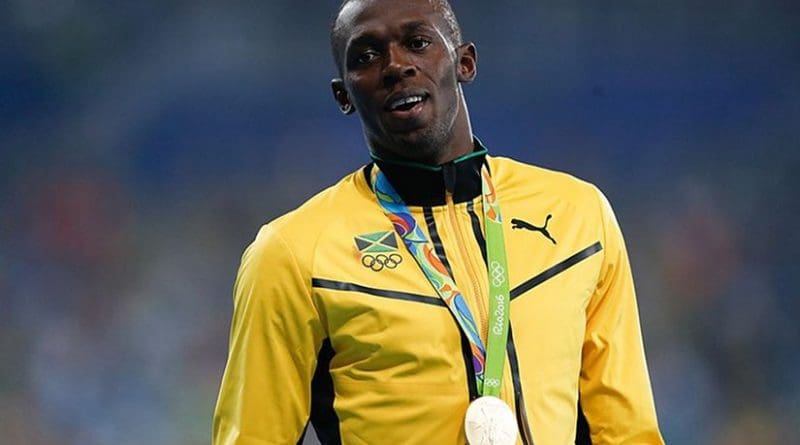Physics Race Pits Usain Bolt Against Jurassic Park Dinosaur
With each new semester, thousands of students dive into introductory classes in physics. One persistent problem that dogs instructors, however, is keeping students engaged in math-heavy classes.
Scott Lee is a physics professor at the University of Toledo who has developed numerous learning activities to help intro-level students get enthusiastic about the topic. His latest innovative activity, published in The Physics Teacher, by AIP Publishing, poses the question: Is Usain Bolt faster than a 900-pound dinosaur?
The exercise asks students to apply concepts of 1D kinematics — displacement, speed, velocity, and acceleration — to determine if the Jamaican sprinter could beat Dilophosaurus wetherilli in a 100-meter race using spreadsheets.
“One big issue in physics education is to generate student enthusiasm for the course material,” Lee said. “These dinosaur problems really spark a lot of interest among the students.”
Lee’s interest in dinosaurs began with finding fossils with his family growing up. Years later, after discovering an approachable book on the physics of dinosaur motion with his daughter, he developed a general education course for nonscience majors based on dinosaurs.
“A number of physics majors have, over the years, taken this general education course just because they think dinosaurs are so cool,” he said. “I then realized that physics majors would be excited to work on dinosaur examples of physics principles.”
To make the exercise work in introductory physics, Lee needed to find just the right dinosaur. Students might recognize the Dilophosaurus genus from the original Jurassic Park novel and movie, where it was fictionally given a rattling neck frill and venom to spit at a hapless DNA thief.
“The maximum running speeds of the other dinosaurs were significantly different from Usain Bolt’s average speed and, therefore, would not make an interesting race,” he said. “Sadly, the more famous Tyrannosaurus rex is believed to have been slower than Usain Bolt.”
The activity includes discussion on Newton’s second law, where acceleration is determined by a combination of mass and force. Being smaller, for example, gives Bolt an early advantage.
After calculating the winner of the race, Lee’s exercise guides students through discussion on similar tests of speed that take place today, such as how lionesses use their acceleration to catch faster prey.
In the end, Bolt leverages Newton’s second law and his own acceleration to leave Dilophosaurus in the dust by 2 seconds.
Lee hopes the paper will inspire other physicists to think outside the box to get new students excited about the problems physics is able to solve.

